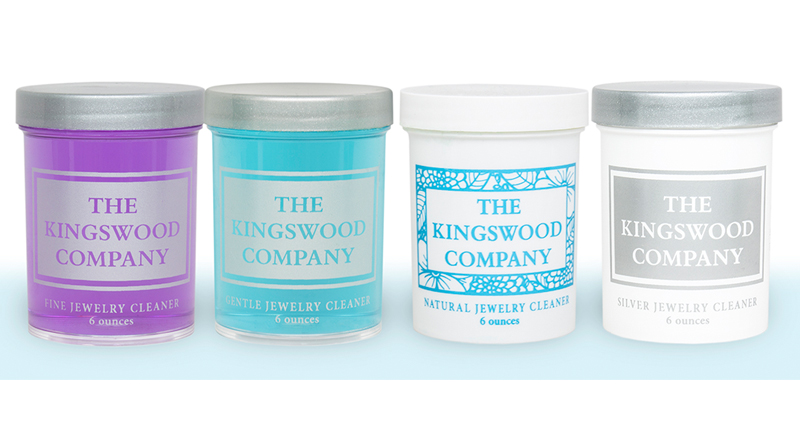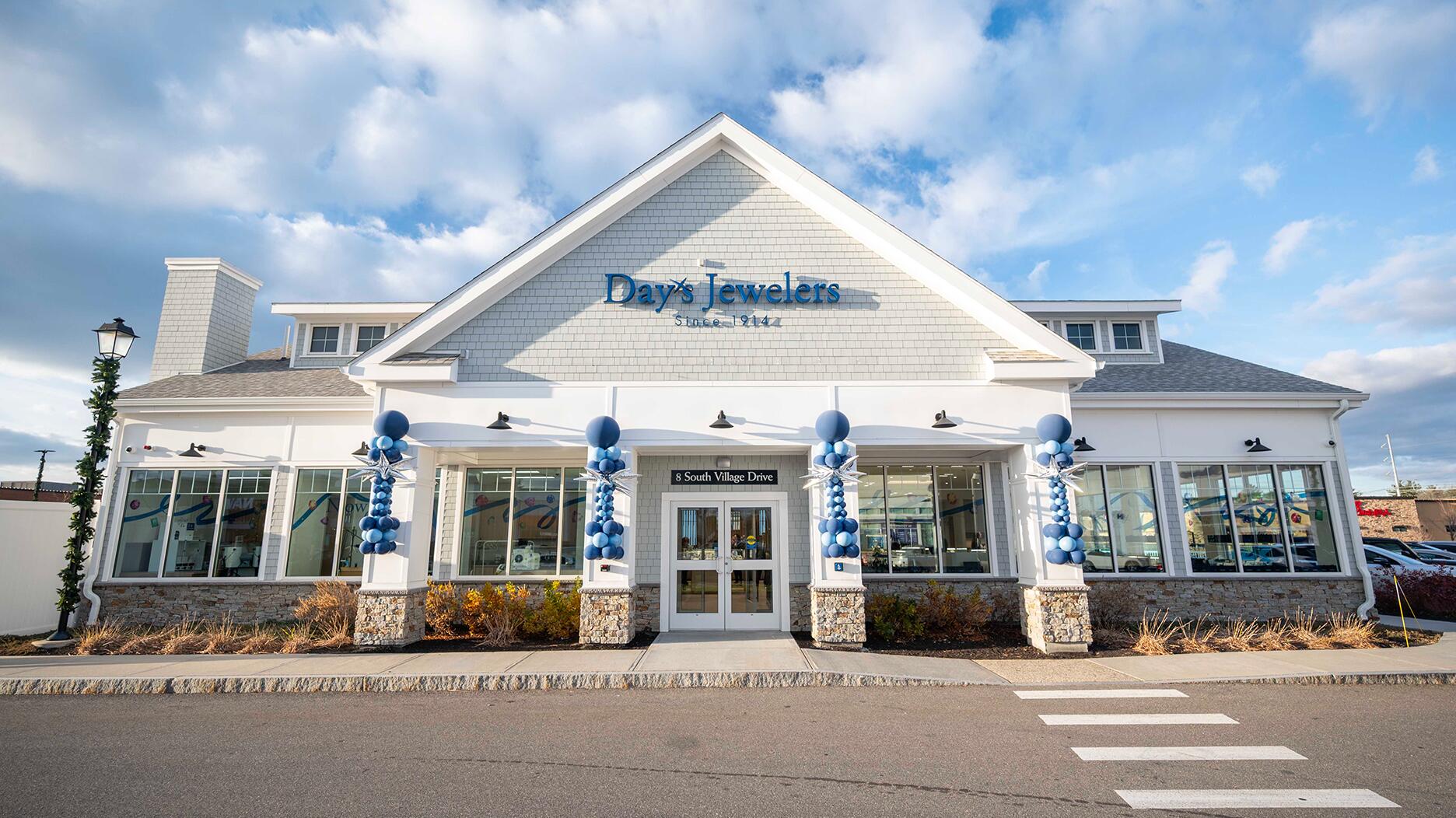The special-edition egg pendant ingested in a New Zealand jewelry store was recovered after a six-day wait.
Jewelry Cleaning Tips Straight from an Expert
Kingswood Company President Kristie Nicolosi talks cleaning routines, the drawbacks of using alcohol on jewelry, and the difference between cleaning and disinfecting.

Columbus, Ohio—This spring, one of the industry’s most in-demand women virtually sat down with National Jeweler to discuss one of the hottest topics of 2020—how to keep jewelry clean and customers calm amid the COVID-19 pandemic.
Kristie Nicolosi, president and CEO of The Kingswood Company, got on a Skype call to talk all things jewelry cleaning.
Based in Columbus, Ohio, Kingswood is a maker of private-label jewelry cleaners and polishing cloths.
Nicolosi discussed hand sanitizer, why using alcohol to clean jewelry is a bad idea, the difference between cleaning and disinfecting, and why now is a great time to talk to customers about jewelry cleaner.
“It’s a tremendous opportunity all the way around to meet that customer where they are and be able to give them, or sell to them ideally, the product that they need,” she said.
“Everybody wants to know how to clean and care for what’s important to them.”
Cleaning vs. Disinfecting
Cleaning and disinfecting are terms that are often used interchangeably, but the chemistry is not the same, Nicolosi said.
Disinfecting typically refers to killing germs on surfaces, not on humans.
The Environmental Protection Agency regulates disinfectants and, Nicolosi said prior to March, only a handful of products were EPA-registered disinfectants.
Since then, the EPA has been issuing temporary approvals under the “emerging pathogens” regulations to get new products on the market quickly because of COVID-19. But, Nicolosi noted, there still are not as many disinfectants as there are soaps.
At this point, there are about 50 active ingredients approved by the EPA to work on the coronavirus. The agency regularly updates its list of approved products, called “List N.”
Those seeking to disinfect surfaces should also note that disinfectants have what’s called a dwell time, meaning the amount of time the product has to stay on the surface—and stay saturated on the surface—to do its job.
Grab a container of Clorox Disinfecting Wipes (if you can get one) and look at the back.
Under “To Disinfect” it states: “Wipe surface to be disinfected. Use enough wipes for treated surface to remain visibly wet for 4 minutes. To kill viruses [including the coronavirus] let stand 15 seconds.”
Nicolosi said overall, the average dwell time of all approved products on the market today is 6 1/2 minutes. The surface must be saturated, and remain saturated, for the full time period indicated.
Cleaning, on the other hand, refers to removing dirt and germs
Jewelry cleaner is, as the name indicates, considered a cleaner but is not FDA regulated as it is not applied to the body. It is a special form of soap formulated to work on hard surfaces, like metals and gemstones, without being damaging.
Nicolosi said both the Centers for Disease Control and Prevention and the World Health Organization recommend cleaning (e.g, washing your hands with soap) over using hand sanitizer whenever possible.
And as with your hands, jewelry cleaner should be applied for 20 seconds before being washed off.
“I don’t want people to think there’s a really easy way we can disinfect everything,” Nicolosi said.
“The best answer is soap and water. It’s more effective in a shorter period of time. It’s just like washing your hands.”
Cleaning Jewelry in Stores
Jewelry should be cleaned with some version of jewelry cleaner before it is handed to a customer to try on and at some point after it is returned, whether that is piece-by-piece and right away or in bulk later in the day.
During Jewelers of America’s Virtual National Convention earlier this year, Holly Wesche, owner of Wesche Jewelers in Melbourne, Florida, said in her store, there is now a corner of a showcase earmarked for unclean jewelry.
It’s a way to ensure all employees know which pieces need to be cleaned before being tried on again while still having merchandise locked up in a secure place.

Ultrasonic jewelry-cleaning machines are, as a general rule, more effective and are good for bulk cleaning.
Jewelry also doesn’t need to be in the machine for the full three minutes, Nicolosi said. The 20 seconds recommended for soap and water will do.
But, she noted, not all jewelry is safe for an ultrasonic machine—if a customer has a loose stone, for example—and there’s also the question of having enough of the machines to make them readily accessible to all retail associates.
She said retailers should invest in jewelry cleaner that aligns with their store’s physical size, budget and merchandise; what a store that specializes in bridal might use is different than what would work for a store that sells a lot of softer gemstones, like pearls.
Whatever it is, it should be something that can be executed consistently across the board, at every case and by every associate, she said.
With repairs, the piece should be cleaned as soon as it comes into the store. Any jewelry that is bought online and returned to a distribution center should be thoroughly cleaned as well.
Thoughts on Alcohol
Many jewelers are using alcohol to clean jewelry both before and after customers try it on, for a couple reasons—it’s inexpensive and it has that antiseptic odor so often associated with cleanliness and sterilization.
As Nicolosi put it: “I think it smells like we think a disinfectant should, which is comforting.”
Kingswood does not recommend the use of alcohol because it is not safe for porous jewelry like emeralds, pearls and opals, it requires a dwell time as a disinfectant (as mentioned above), and it’s not all the same.
Anything below or above 70 percent isopropyl alcohol (a solution of approximately 70 percent IPA and 30 percent distilled water) is actually less effective at killing germs.
While this might seem counterintuitive—shouldn’t 99 percent IPA be better than 70 percent IPA?—Nicolosi said higher percentages of IPA are actually less effective at disinfecting because the water is a necessary part of the process, serving to increase surface contact time.
Kingswood also recommends against jewelers buying 99 percent IPA and trying to mix their own solutions, as it can be both dangerous and ineffective.
A Few Last Notes for Consumers
While popular right now for obvious reasons, hand sanitizer isn’t great for soft stones, like pearls and opals. The alcohol in it could damage them and dull the shine.
Kingswood recommends jewelers tell their customers to take off any pearl or opal rings before applying hand sanitizer.
Nicolosi said the question of, should people take off their jewelry when they wash their hands is a subject of much debate.
The only guidance the CDC has issued on the matter is that health care professionals should not wear jewelry at all while on the job, which is not helpful to most consumers or jewelry professionals.
She said Kingswood’s recommendation is two-fold.
Consumers should wash their hands often throughout the day and keep their wedding rings or other small rings on while doing so, just washing around them. This will remove surface germs but, she noted, not remove or wash away germs that might linger underneath the ring.
Then, once a day, consumers should clean their rings by dropping them in a jar of cleaner and letting them soak while they wash their hands.
“Because viruses cannot replicate without a host, they will not be multiplying underneath your rings,” Nicolosi said. “As long as you are not putting them in your mouth, or licking your fingers (or your rings), you should be safe.”
The Latest

Associate Editor Natalie Francisco plays favorites with Piece of the Week, selecting a standout piece of jewelry from each month of 2025.

The “Love and Desire” campaign is inspired by the magic that follows when one’s heart leads the way, said the brand.

How Jewelers of America’s 20 Under 40 are leading to ensure a brighter future for the jewelry industry.

Two awardees will receive free tuition for an educational course at the Swiss lab, with flights and lodging included.


Berta de Pablos-Barbier will replace Alexander Lacik at the start of January, two months earlier than expected.

Sotheby’s held its first two jewelry sales at the Breuer building last week, and they totaled nearly $44 million.

Roseco’s 704-page catalog showcases new lab-grown diamonds, findings, tools & more—available in print or interactive digital editions.

Winners will receive free registration and lodging for its fourth annual event in Detroit.

Here are six ideas for making more engaging content for Instagram Reels and TikTok, courtesy of Duvall O’Steen and Jen Cullen Williams.

The honorees include a notable jewelry brand, an industry veteran, and an independent retailer.

Carlos Jose Hernandez and Joshua Zuazo were sentenced to life without the possibility of parole in the 2024 murder of Hussein “Sam” Murray.

Yood will serve alongside Eduard Stefanescu, the sustainability manager for C.Hafner, a precious metals refiner in Germany.

Set in a Tiffany & Co. necklace, it sold for $4.2 million, the highest price and price per carat paid for a Paraíba tourmaline at auction.

The jeweler’s “Deep Freeze” display showcases its iconic jewelry designs frozen in a vintage icebox.

Take luxury gifting to new heights this holiday season with the jeweler’s showstopping 12-carat sphene ring.

This year's theme is “Unveiling the Depths of the Ocean.”

In its annual report, Pinterest noted an increase in searches for brooches, heirloom jewelry, and ‘80s luxury.

Starting Jan. 1, customers can request the service for opal, peridot, and demantoid garnet.

The new catalog features its most popular chains as well as new styles.

The filmmaker’s personal F.P. Journe “FFC” prototype was the star of Phillips’ recent record-setting watch auction in New York.

The new location in the Design District pays homage to Miami’s Art Deco heritage and its connection to the ocean.

Inflations, tariffs, and politics—including the government shutdown—were among consumers’ top concerns last month.

“Longtime favorite” presenters, as well as first-time speakers, will lead talks and workshops at the annual event in Tucson next year.

Silas Smith of Meridian Metalworks won the challenge with his pendant that blends Australian and American landscapes.

The sale of the 31.68-carat, sunset-hued stone was part of Sotheby’s first series of events and auctions in Abu Dhabi.

Most customers who walk into your store this month have made up their minds. Your job is to validate their choice, Emmanuel Raheb writes.


























